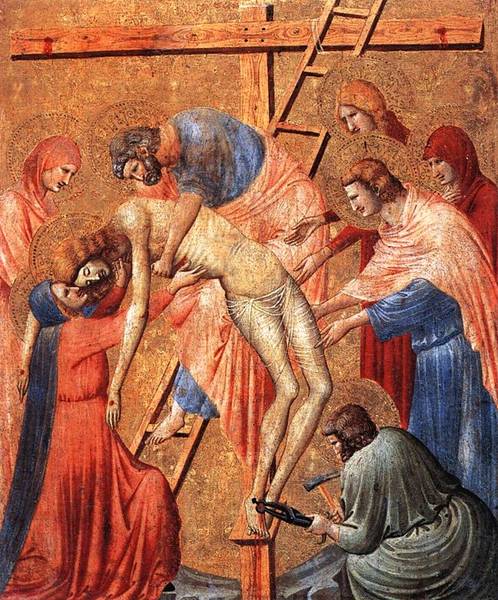The Popularity of the Primitives, an exhibition which runs at the Galleria dell’Accademia in Florence until 8 December, is concerned with the fascinating subject of when 14th- and early 15th-century Italian paintings (and other early art treasures) came to be considered worthy of notice and were, as a consequence, incorporated in public and private collections. Up until the late 18th century, only works from the time of Raphael onwards were in vogue: besides Raphael, Michelangelo and Titian, collections featured paintings by artists such as Correggio, Guido Reni, Federico Barocci and Rubens.

The exhibition tells the story of 42 collectors, almost all of them little-known, who lived in the late 18th or early 19th century. And an impressive amount of scholarly research has gone into it—which is heartening to see, in an age when fewer and fewer museum directors are still art historians, and curators are increasingly put under pressure to devise shows that will make money. To each collector a section is dedicated, depending on the region of Italy where they lived: besides their (for some reason usually unflattering) portrait, there is a display of a small selection of the works they are known to have acquired (and which are now in private or public collections). We discover that these erudite individuals, whether prelates or cardinals, noblemen or tradesmen, shared an interest in the cultural value of these early works and that by obtaining them they rescued them from oblivion and possible destruction. In later times when they fell into the hands of antiquarians and dealers, their monetary value steadily increased, although it is interesting to note that today the ‘primitives’ are worth far less than modern and contemporary artworks.
By looking at the provenance of the works one can see how many of them ended up in the great museums of the world: a certain Agostino Mariotti, who amassed 600 works and who was mentioned by travellers on the Grand Tour, was to leave his collection to the Vatican Picture Gallery. In 1780 Cardinal Stefano Borgia (who almost became pope) acquired St Euphemia by Mantegna, which is on show, and most of his collection is now in the Museo di Capodimonte in Naples. This great Renaissance artist is included as a reminder also that it was not only the ‘primitive’ gold-ground paintings which had been neglected up until this time but also those by artists now considered of fundamental importance. The Ranghiasci family of Gubbio in Umbria, whose large romantic park is today open to the public, owned an exquisite Descent from the Cross by Pietro da Rimini, lent to the present exhibition by the Louvre.
Marchese Alfonso Tacoli Canacci, who died in Emilia in 1801, is represented by four of the best Tuscan works in the exhibition: a Madonna of Humility by Agnolo Gaddi, which ended up in a private collection in New York; another Madonna of Humility by Fra’ Angelico; a very unusual long predella panel by Giovanni di Paolo of Christ carrying the Cross surrounded by a crowd of saints all holding a Cross; and a tiny Entry of Christ into Jerusalem by Pietro di Giovanni d’Ambrogio. The three latter works went to the national museum in Parma.
Fra’ Francesco Raimondo Adami, a Servite friar at the convent of Santissima Annunziata in Florence, collected important early works which are now part of the collection of the Galleria dell’Accademia itself: on show are St Mary Magdalene with stories from her life, by the Master of the Magdalene (named from this work), and paintings by Niccolò di Pietro Gerini, Andrea Orcagna and Fra’ Angelico. Other works acquired at this time by Tuscan collectors (and also included in the exhibition) were to form the nucleus of the earliest works in the Museo di San Matteo in Pisa and the Pinacoteca Nazionale in Siena.
Only two of the collectors are well-known today since their collections survive on public display under their own names: Angelo Maria Bandini of Fiesole (whose exquisite museum is still in that little town above Florence) and Teodoro Correr (1750–1830) of Venice (the huge Museo Correr is in Piazza San Marco). For this exhibition a relief of the Madonna and Child by Domenico Rosselli, once owned by Bandini, has been loaned from the V&A so that it has been reunited with other works still in Fiesole; and the Correr has sent two of its masterpieces to Florence: a Pietà by Cosmè Tura and another, unfinished work of the same subject, by Antonello da Messina. A superb small St Nicholas of Bari, also by Cosmè Tura, in a section towards the end of the exhibition, illustrates some of the works acquired by French collectors while in Rome.
by Alta Macadam, author of Blue Guide Florence.






